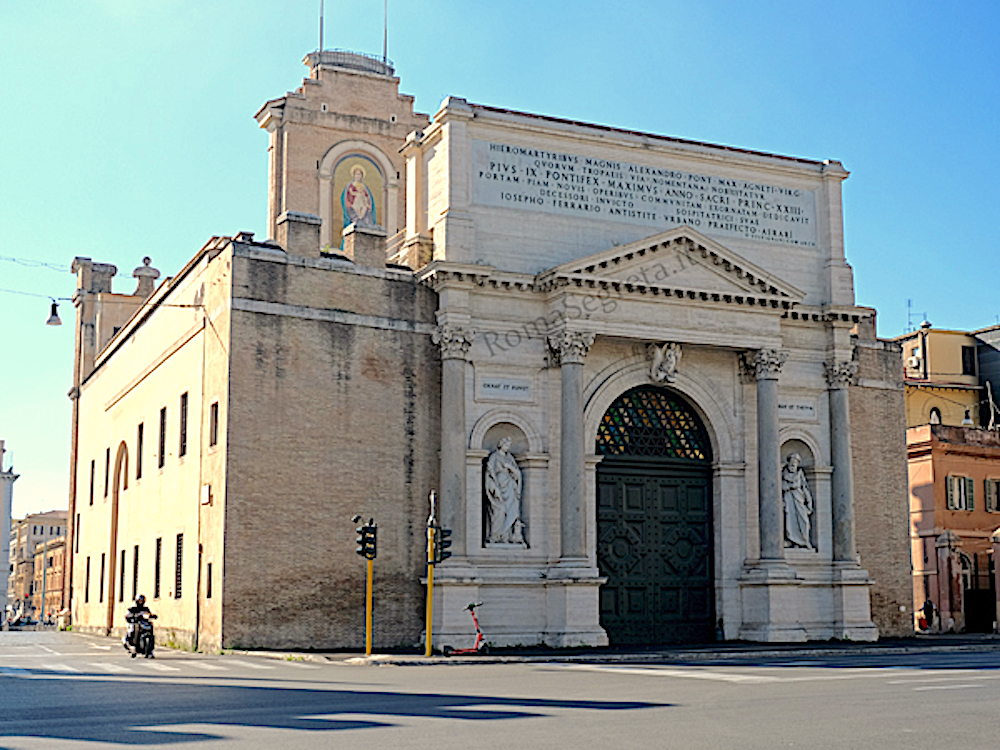
Porta Pia
Porta Pia: Rome’s Understated Gateway to History and Revolution
Tucked away on the northeastern edge of Rome’s Aurelian Walls lies Porta Pia — a city gate that rarely tops the average traveler’s must-see list, yet it has quietly witnessed centuries of history unfold. Designed by none other than Michelangelo Buonarroti in the 16th century, Porta Pia stands not only as a testament to Renaissance architecture but also as a powerful symbol of Italian unification.
A Michelangelo Masterpiece… with a Twist
When Pope Pius IV commissioned Michelangelo to redesign the gate in 1561, the original goal was both practical and symbolic: to provide a new entryway into Rome and to glorify the Pope’s legacy. Michelangelo’s vision was bold and expressive, but like many of his architectural projects, the final execution was altered after his death. The current facade, completed by Giacomo Del Duca in 1575 and later remodeled in the 19th century, reflects a mix of Renaissance foundations and later neoclassical influence.
Don’t expect the overt grandeur of the Colosseum or the Pantheon here — Porta Pia’s charm is more subtle, and its history deeper than it first appears.
The Breach of Porta Pia: Italy’s Birth Cry
What truly sets Porta Pia apart is its critical role in Italy’s modern history. On September 20, 1870, this gate was the site of the famous Breccia di Porta Pia — the breach through which the Bersaglieri (elite Italian riflemen) stormed into Rome, effectively ending Papal control and marking the final act of the Risorgimento, Italy’s unification movement.
The cannonball-ridden section of the wall remains preserved to this day. Standing before it, it’s easy to feel the weight of that moment: Rome ceased to be a city of Popes and became the capital of a unified, secular Italy.
A Quiet Stop with Loud Echoes
Today, Porta Pia may not draw the selfie-snapping crowds of the Roman Forum, but that’s part of its appeal. A visit here offers something rarer: a quiet pause, a space to reflect on how art, power, and revolution converge in stone and mortar.
There’s even a small museum inside — the Museum of the Historical Bersaglieri — which tells the story of the daring soldiers who changed the course of Italian history. It’s a hidden gem for history buffs and those who appreciate off-the-beaten-path discoveries.
Planning Your Visit
Porta Pia is easily reached on foot or by bus from Termini Station. It sits at the junction of Via Nomentana and Via XX Settembre, not far from the British Embassy. Whether you’re tracing Michelangelo’s legacy, following the Risorgimento, or simply craving a moment away from Rome’s usual crowds, Porta Pia is a rewarding detour.
Final Thoughts
Rome has a way of turning even its overlooked corners into chapters of a story that spans millennia. Porta Pia might not shout for attention, but it speaks volumes to those who listen. Next time you’re in the Eternal City, carve out a moment to stand beneath this gate — and let the past whisper to you through stone.
![]()




